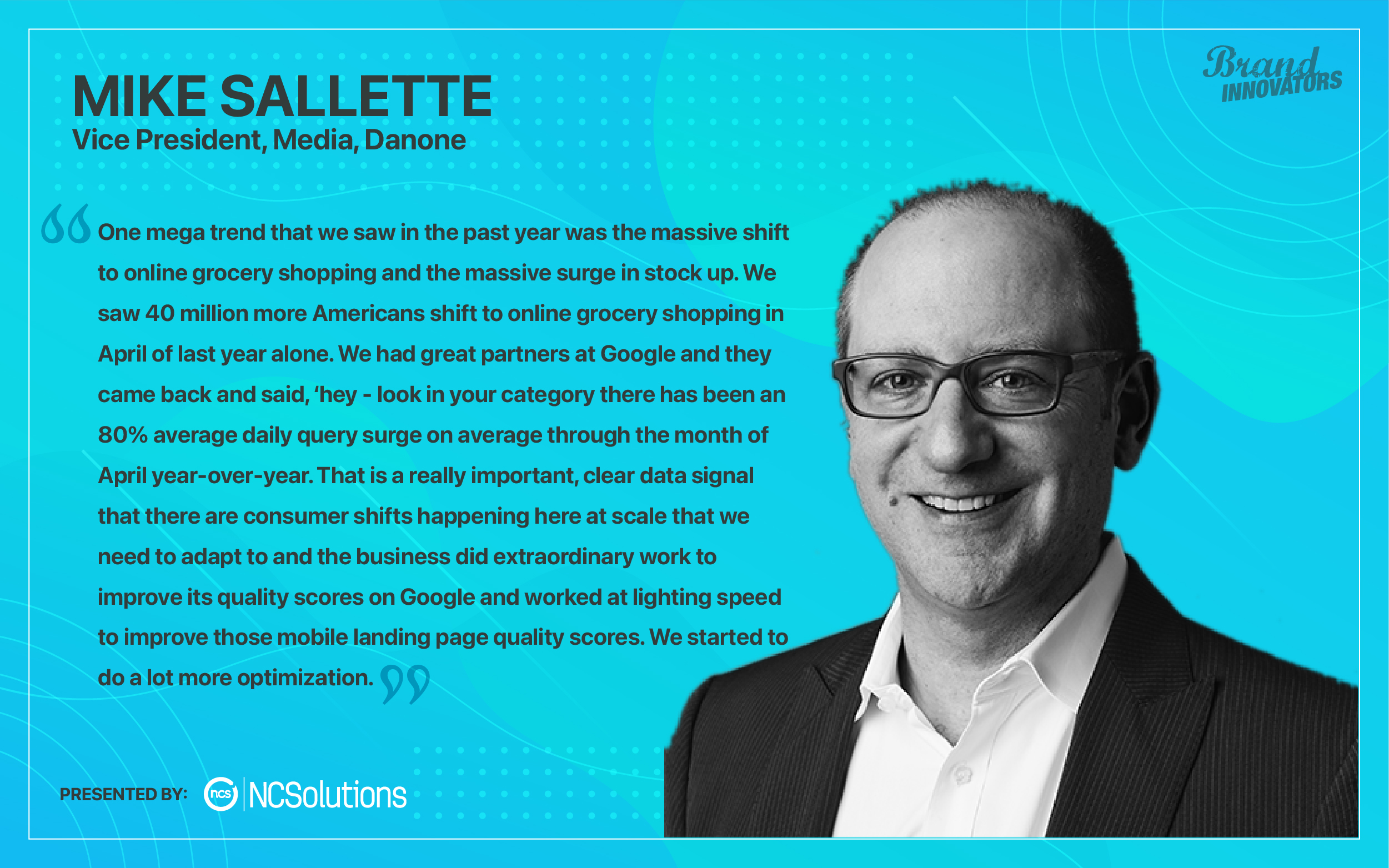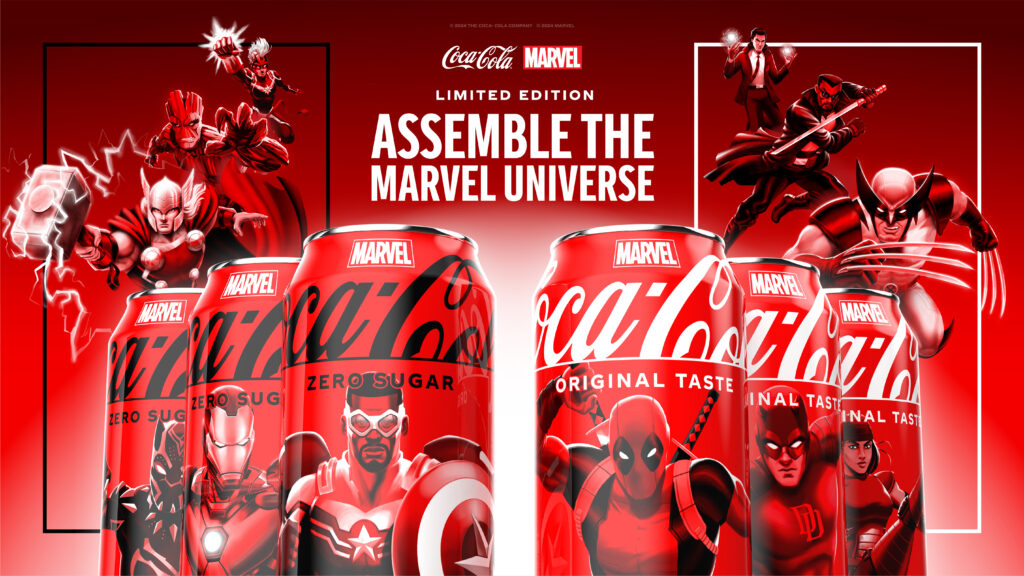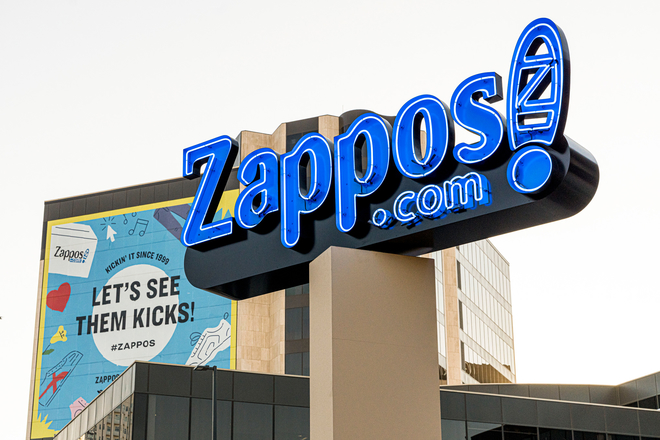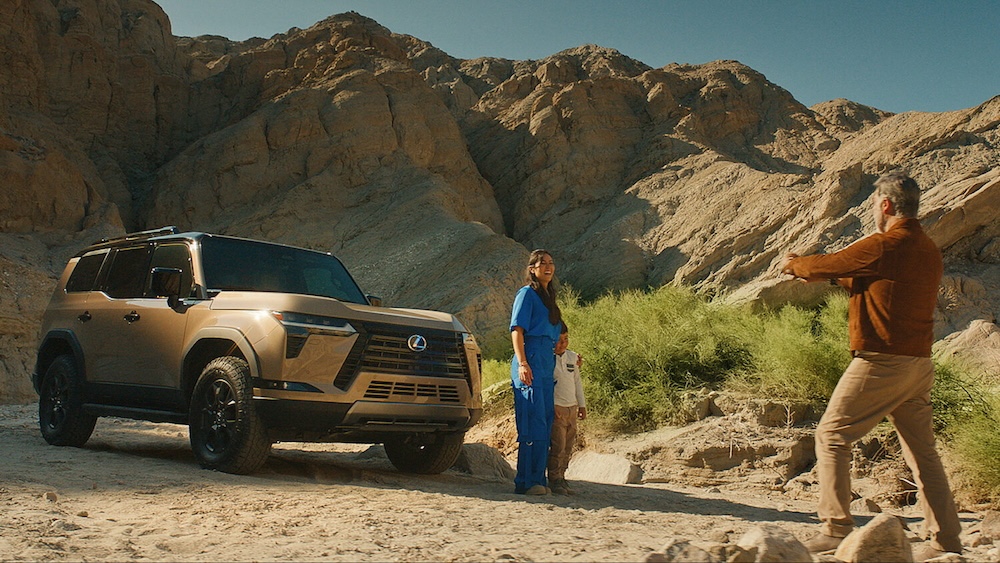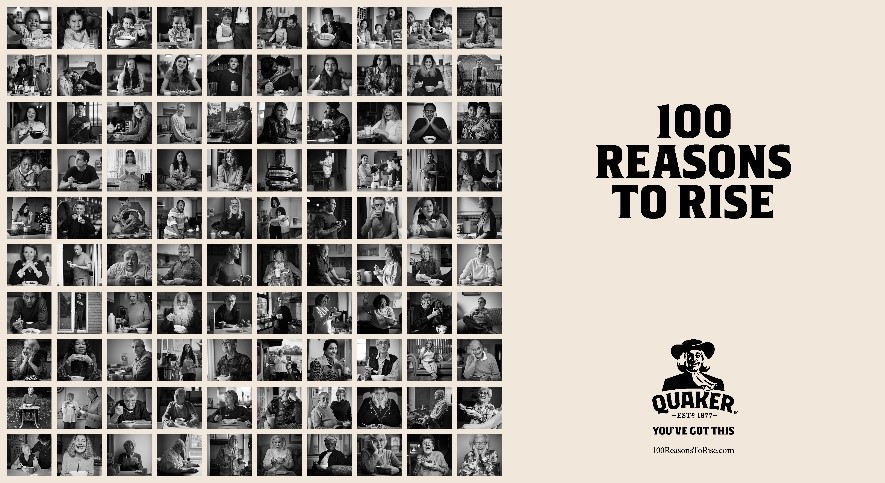Digital advertising has been on the rise for years and continues to thrive thanks driven by the increase in digital consumption over the last year.
As brands pivoted during the pandemic to meet consumers where they are spending their time –increasingly in digital spaces – the opportunity for brands to tell stories and connect to consumers through media continues to expand. At Brand Innovators Brand Innovators 2021 Media Buying Summit last week, experts from across the industry discussed how the media buying landscape is evolving.
For Danone, the increase in online grocery shopping has impacted how they are advertising online and how the brand is working with partners to look at the signals.
“One mega trend that we saw in the past year was the massive shift to online grocery shopping and the massive surge in stock up,” said Mike Sallette, Vice President, Media, Danone. “We saw 40 million more Americans shift to online grocery shopping in April of last year alone. We had great partners at Google and they came back and said, ‘hey – look in your category there has been an 80% average daily query surge on average through the month of April year-over-year. That is a really important, clear data signal that there are consumer shifts happening here at scale that we need to adapt to and the business did extraordinary work to improve its quality scores on Google and worked at lighting speed to improve those mobile landing page quality scores. We started to do a lot more optimization.”
Walmart – one of the largest retailers in the country that has its own in-house ad network – uses its massive dataset to drive more compelling stories for customers in a move to develop deeper relationships.
“Our intent, which is to take Walmart and our relationship with customers beyond just an ad campaign – to really speak to you and tap into a world where we can think about and predict what you might need and what your intent might be,” said Jill Toscano, Vice President, Head of Media at Walmart. “The goal is to help you imagine the realm of possibilities – something as simple as a recipe for dinner or creating a backyard pizza kitchen. We believe that we can play a role in not only helping you discover and be inspired by these things but also helping you fulfill upon them and turning that dream state into a reality.”
Data-driven content is also central to Diageo’ portfolio of brands, who are using the data to create the experiences that they imagine consumers would like to have, while maintaining privacy. “We view data as fuel for all consumer experiences when done well and with consent,” said Joshua Nafman, Global Director, Digital & Media at Diageo. “Our goal is creativity with precision. We deliver this with the right people, process, and tools to collect, analyze, and activate consumer intelligence in a channel-agnostic way.”
CPG brands have had a huge opportunity in optimizing their media buying and this opportunity comes with responsibility, said Rob Master, Vice President, Media & Digital Engagement at Unilever –a responsibility to entertain and tell good stories.
“At the end of the day, brands are storytellers,” said Master. “For Unilever, who really has purpose at its heart, our brands have rich stories behind them, so we can tell all kinds of stories. It gives us a lot of flexibility. Dove can talk about the amazing value it brings to your face, or we can also talk about the “Crown Act,” or focus on ending hair discrimination. The streaming landscape provides a potential platform for us to tell these stories in a different way, which is what really excites me about the streaming space.”
HBO Max has seen massive growth over the past year, as consumers in lockdown looked for new sources of entertainment. One of their big goals is to acquire new customers but once they are in the door, the goal is retention.
“We are a streaming service and a subscription service,” said Su Kwon Kelsay, SVP, Marketing Technology and Operations at HBO Max, WarnerMedia. “We need to get folks in the door to sign-up and subscribe, and then we want to keep them for as long as possible. I build our stack around tracking our media and marketing to know what’s working. I also want to track what consumers are doing once they are in our service and look for those key drivers that are keeping them there – the content that makes them stay and the features that help them.”
As more consumers cut the cord and adopt streaming services, addressable TV has been propelled into a level of new innovation which could have taken years to achieve.
“The shift towards streaming over the past year – it’s like we are in a time machine,” said Mike Scafidi, Global Head of Marketing & Advertising Technology at PepsiCo. “We are 10 years in the future. Now we can really analyze what does addressable TV look like and that is really super exciting. We are very fortunate that before this time, and even before we were confronted with a post-cookie world, we had been building a very robust addressable audience internal capability and so our opportunity is really how do we find the channels to most effectively deploy those audiences. I think OTT is a huge opportunity going forward.”
Rebecca Panico, Sr. Director, Media Strategy & Planning, Hilton said that there is always innovation in the media landscape and that the right agency partners can help brands adapt to a changing environment.
“It’s about how well your brand can pivot with the innovation and having appreciation for the complexity,” said Panico. “As a brand, you need to figure out how to partner with agencies to reach audiences effectively in this highly fragmented, highly distracted, highly automated world. It’s difficult, but we want to make sure our agencies are paid well to do the work we want them to do. But we also expect that there is more efficiency that we can put into the system to manage our costs. We want to find the balance of achieving what we want to do in a way that allows for less muck.”
For Shenan Reed, SVP, Head of Media at L’Oreal, agency partners and stakeholders within the brand offer a collaboration environment of idea exchanges. “Everybody has something to share and something to bring,” said Reed. “I want to make sure everyone is heard on both the agency side and the brand side. The beauty of having your talent on the agency side is that they will continue to bring their robust knowledge of what they are hearing and seeing at the agency. And on the brand side, you’ll get the robust knowledge of what’s happening in the business.”
Personalization continues to be a core component of media buying and the tools to deliver relevant experiences are becoming more widely available. Facebook, for instance, is honing in on small businesses and creators to bring tools traditionally reserved for larger advertisers.
“There are so many small businesses, creators and Instagram stars who’ve built their business on our platforms and they’re not going to do what they are able to do without those personalized ads,” said Christine Lustig, Media Investment Lead, North America, Facebook. “If I’m a small baker out in San Francisco, I don’t need to buy national Facebook ads. I want to buy a very select, geo targeted region in a specific interest group and I have a limited budget. Without a lot of inventory or a media budget, Facebook helps these small businesses grow because they are able to personalize their ads and target exactly who they want and need to reach.”
As companies look ahead to what comes next in the media landscape, it helps to remember what marketing is all about.
“What’s most important when you think about all the innovations we’ve had over the past 60 years, is that they have all been anchored in the needs of the customer,” said Christopher Thomas-Moore, Vice President of Media, Digital Marketing, Product/Menu Development, Global Marketing at Domino’s Pizza.
